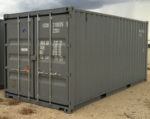
Alex Mills
By Alex Mills
Some politicians have questioned recently one of the more successful oil and gas regulatory programs in Texas – a program so successful that it has been copied by many states.
The program is called the Oil and Gas Regulatory and Cleanup (OGRC) Fund, and it is designed to finance, though oil and gas industry fees and fines, the plugging of orphaned wells and cleanup abandoned sites.
The fund actually started in 1984 at the beginning of the first crash of the oil and gas industry after the rise in prices during the 1970s and early 1980s. Crude oil prices rose from $3 per barrel to $7 in 1973 to 1975, and then again from 1979 to 1981, eventually reaching more than $30.
Virtually everyone assumed that oil prices would rise forever and never decline. However, as prices began to fall because of an oversupply of oil it became uneconomical to keep many high-cost wells producing. The number of wells that were not producing grew. The oil and gas industry believed that prices would rebound, and the wells would become economic again. Regulators and legislators were convinced that these wells were still assets to the operators and the state, and should not be plugged and lost forever.
Industry agreed to pay a $100 fee per well into the newly created Well Plugging Fund if the state had to come in and plug them.
Oil prices fell to a low of $10 per barrel in 1986. The depression continued, and the number of orphaned wells grew. In 1991, the Texas Legislature passed a bill that increased the fees on the oil and gas industry and set a cap of $10 million on the fund. The cap has increased twice to $30 million today.
From fiscal year 1984 to fiscal year 1991, the Railroad Commission (RRC) plugged 4,078 wells at a cost of $16 million, and 31,582 wells at a cost of $243 million from fiscal year 1992 to 2016. Additionally, the RRC has cleaned up 5,961 sites at a cost of $75 million.
RRC records shows that as of Aug. 31 there were 436,309 oil and gas wells in Texas: 320,242 active and 116,067 inactive, with 9 percent considered orphaned.
Historically, the number of orphaned wells has been declining since 2003 when there were 18,735 wells scheduled to be plugged by the RRC to 7,038 in 2010. Orphaned wells have increased to 10,161 in August with the decline in commodity prices.
The Texas Legislature requires the RRC to issue a report each year on the OGRC, and the most recent report was issued on Dec. 6 for fiscal year 2016. “It is important to understand that the number of orphan wells is a dynamic number that changes daily, as wells are place into and out of compliance,” the report stated.
“The Commission’s regulatory goals are to eliminate the threat of pollution posed by orphaned unplugged wells and to minimize the number of orphan wells requiring plugging,” the report stated.
The OGRC has been successful in preventing the premature plugging of thousands of wells since 1984. Millions of dollars have been added to the state’s tax base through increased oil and natural gas production with no expense to the state.
Alex Mills is President of the Texas Alliance of Energy Producers. The opinions expressed are solely of the author.


















Speak Your Mind